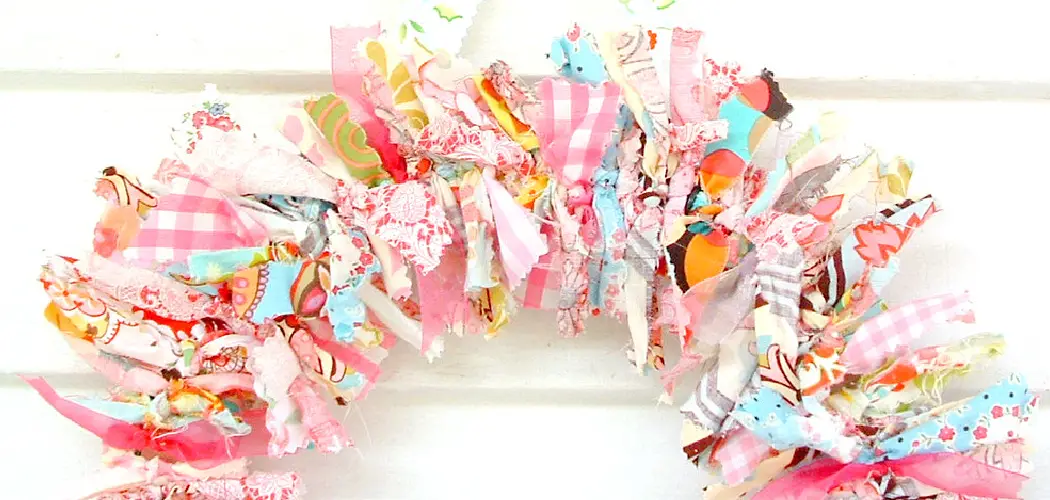Rag wreaths are a unique and budget-friendly way to decorate your home. They can add a touch of rustic charm while also being versatile enough to fit into any style of decor. Making your rag wreath is not only a fun and creative activity, but it also allows you to customize the colors and materials used to fit your taste. Plus, they make great gifts for friends and family!
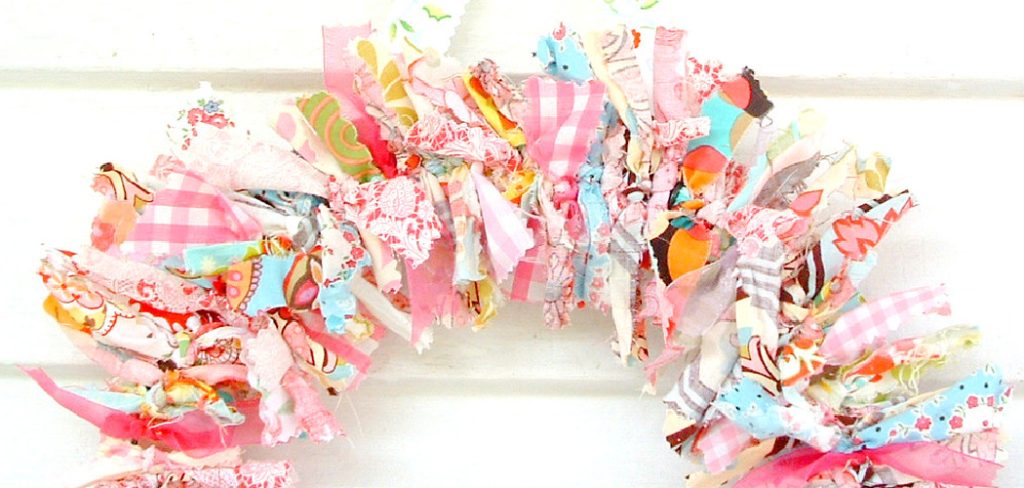
The main advantage of making a rag wreath is the sense of accomplishment and creativity it brings. As you create your unique wreath, you can feel proud of yourself for making something beautiful and useful with your own hands. In this blog post, You will learn how to make a rag wreath in detail.
Historical Context and Traditional Use
The history of traditional medicine dates back thousands of years, with evidence of its use found in ancient civilizations such as Egypt, China, India, and Greece. Traditional medicine is a broad term encompassing various healing practices and medical systems developed over time by different cultures and societies.
Traditional medicine has been used to treat various health conditions, from common colds and flu to more serious illnesses. It has also been used as a form of preventative care, promoting overall health and well-being.
Traditional medicine is deeply rooted in religious beliefs and cultural traditions in many cultures. For example, in Chinese traditional medicine, Yin and Yang concepts play a central role in understanding health and disease. In Ayurvedic medicine from India, the balance between mind, body, and spirit is emphasized.
Traditional medicine has also been used spiritually, with healers often seen as intermediaries between the physical and spiritual realms. In some cases, traditional medicine may involve rituals or ceremonies to invoke healing energies or spirits.
Materials Needed
- Wire wreath frame (can be found at most craft stores)
- Fabric strips (cotton, flannel, or any other material of your choice)
- Scissors
- Hot glue gun and glue sticks
- Ribbon or twine for hanging
- Various embellishments (such as pinecones, bells, or ornaments)
- Wire cutters (if needed for larger embellishments)
- Greenery (artificial or real)
- Gloves (optional)
- Protective mat or surface
Adding to the list of materials, you may also need some additional supplies depending on your preferences and design.
Step-by-step Instructions for How to Make a Rag Wreath
Step 1: Gather Supplies
- Fabric scraps
- Wire wreath frame
- Scissors
Step 2: Cut the Fabric
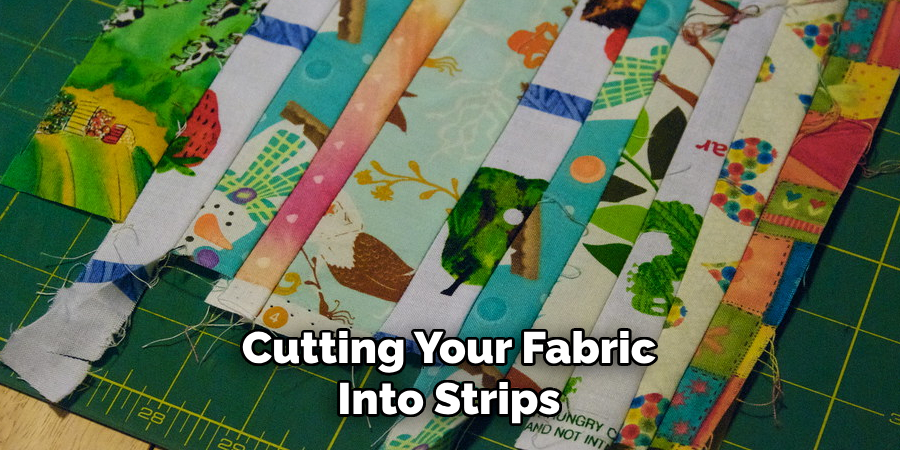
Start by cutting your fabric into strips. You can use any type of fabric, such as cotton, flannel, or fleece. The strips should be about 1 inch wide and 6 inches long. Take one strip of fabric and tie it onto the wire wreath frame. Make sure to double-knot it so that it stays in place.
Step 3: Continue Tying on Strips
Continue tying strips of fabric onto the frame, alternating colors and patterns as desired. You can also mix different types of fabric for a more interesting look. As you tie on the fabric strips, make sure to fill in any gaps on the frame. This will create a fuller and more visually appealing wreath.
Step 4: Fluff and Adjust
Once you have tied on all of your fabric strips, fluff and adjust them as needed. You can also trim any excess fabric for a neater appearance. To add a personal touch to your wreath, you can add embellishments such as ribbons, bows, or flowers. Simply attach them with wire or hot glue.
Step 5: Hang Your Wreath
Using a wreath hanger or ribbon, hang your rag wreath on a door or wall. It’s best to choose a location that is protected from the elements. To keep your rag wreath looking its best, you can fluff and adjust it every so often. You can also spot clean any stains or dirt with a damp cloth.
Sit back and admire your beautiful handmade wreath! You can also switch up the fabric and embellishments seasonally for a new look throughout the year. By following these simple steps, you can easily create a stunning rag wreath to decorate your home or give as a thoughtful handmade gift. This craft project is not only fun and easy, but it also helps to repurpose old fabric and reduce waste.
Safety Tips for How to Make a Rag Wreath

- Keep Sharp Tools Out of Reach – When working with cutting tools such as scissors or wire cutters, make sure to keep them away from young children. It’s best to work on your project in an area where they can’t easily access these items.
- Use Appropriate Protective Gear – If you’re using hot glue or other adhesives, it’s important to protect yourself from potential burns. Consider wearing gloves or using a heat-resistant mat to protect your hands and work surface.
- Be Mindful of Allergens – Some materials used in wreath-making, such as dried flowers or pinecones, can trigger allergies. If you or someone in your household has allergies, make sure to wear a mask and work in a well-ventilated area.
- Take Breaks – Crafting can be a fun and relaxing activity, but it’s important to also take breaks and rest your hands. Prolonged repetitive motions can lead to hand fatigue or even injuries. Listen to your body and take breaks when needed.
- Store Materials Safely – After completing your wreath, make sure to store any leftover materials in a safe place. Sharp items should be stored in a container or drawer, and delicate items should be placed in a secure bag or box to prevent damage.
- Don’t Rush – Crafting can be a fulfilling and enjoyable experience, but it’s important not to rush through the process. Take your time and pay attention to detail to ensure your wreath turns out beautifully.
- Follow Instructions Carefully – If you’re following a tutorial or instructions for making a specific type of wreath, make sure to read and follow the steps carefully. Skipping steps or using incorrect materials could result in an unsafe or unsatisfactory final product.
By following these safety tips, you can enjoy the process of making a rag wreath without any accidents or injuries.
Popularity of Rag Wreaths of Making a Rag Wreath
Rag wreaths have become increasingly popular as a form of home decor. These whimsical decorations are made from scraps of fabric, usually in the form of old t-shirts or other clothing items. While rag wreaths may seem like a simple project, they require skill and creativity to make them truly beautiful. One reason for the popularity of rag wreaths is their versatility.
They can be made to fit any style or season, from rustic and country themed wreaths to elegant and modern designs. Rag wreaths can also be customized to match specific color schemes, making them the perfect addition to any home.

Another factor contributing to the popularity of rag wreaths is their cost-effectiveness. As they are made from recycled materials, they tend to be a budget-friendly option for home decor. Additionally, creating a rag wreath can be a fun and affordable crafting project, making it appealing to those who enjoy DIY activities.
In recent years, the trend of upcycling and repurposing has gained traction, with people becoming more conscious about sustainability and reducing waste. Rag wreaths are a prime example of this movement, as they take something old and turn it into something beautiful and useful.
Alternating Knot Techniques for Making a Rag Wreath
There are many different ways to create a rag wreath, and one of the most popular techniques is using alternating knots. This type of knotting technique adds texture and depth to your wreath, making it stand out from other traditional wreaths. To help you get started on creating your own rag wreath with alternating knots, here are six different knot techniques that you can use:
1. Basic Alternating Knot
The basic alternating knot is the foundation for all other knot techniques in this list. To create this knot, you will need two strips of fabric, one longer than the other. Fold both pieces of fabric in half and loop them around a wreath form or hoop. Next, tie a simple overhand knot with the ends of each strip. Repeat this process, alternating between the longer and shorter strips of fabric until your wreath form or hoop is completely covered.
2. Double Alternating Knot
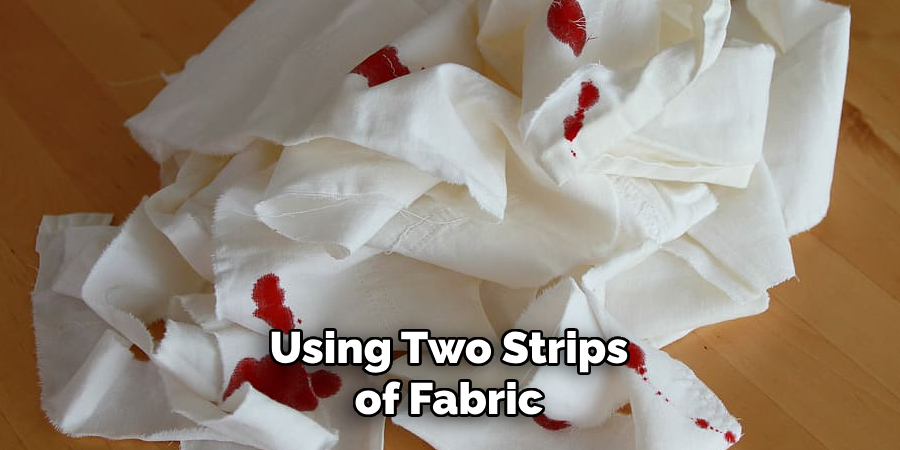
To create more volume in your rag wreath, you can use a double alternating knot technique. This technique involves using two strips of fabric for each knot instead of one. Fold both pieces of fabric in half and loop them around the wreath form or hoop. Then, take one end of each strip and tie them together in a simple overhand knot. Repeat this process with the other ends of the strips until your wreath form or hoop is completely covered.
3. French Knot
The French knot technique creates a more intricate look for your rag wreath. To create this knot, you will need two strips of fabric, one longer than the other. Fold both pieces of fabric in half and loop them around the wreath form or hoop. Next, take the longer strip and wrap it around the shorter strip, then tuck the end under and pull through to create a knot. Repeat this process with all of your strips until your wreath form or hoop is completely covered.
4. Braided Knot
For a unique and textured look, you can use the braided knot technique for your rag wreath. To create this knot, you will need three strips of fabric. Fold all three pieces in half and loop them around the wreath form or hoop. Next, braid the three strands together until you reach the end, then tie a simple overhand knot to secure the braid in place. Repeat this process until your wreath form or hoop is completely covered.
5. Twist Knot
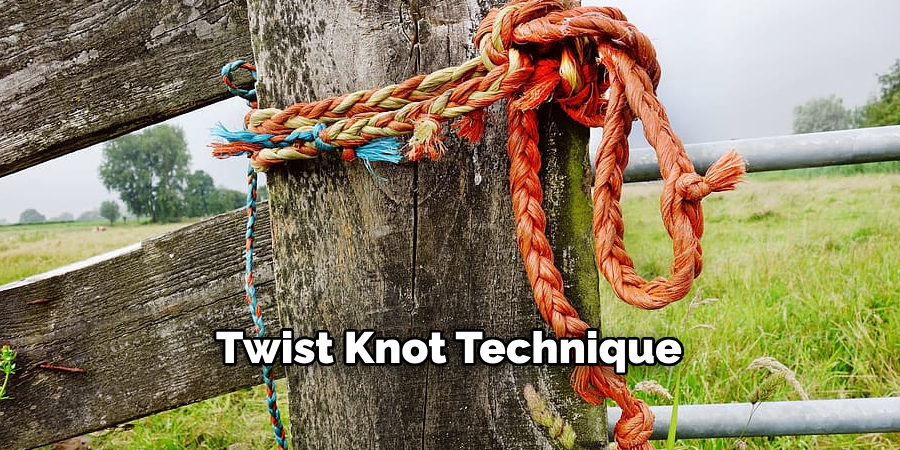
The twist knot technique adds a fun and playful element to your rag wreath. To create this knot, you will need two strips of fabric, one longer than the other. Fold both pieces of fabric in half and loop them around the wreath form or hoop. Next, twist the longer strip tightly around the shorter strip until you reach the end, then tie a simple overhand knot to secure it in place. Repeat this process with all of your strips until your wreath form or hoop is completely covered.
6. Tied Knot
The tied knot technique is perfect for those who prefer a more rustic and natural look for their rag wreath. To create this knot, you will need two strips of fabric, one longer than the other. Fold both pieces of fabric in half and loop them around the wreath form or hoop. Next, tie a simple overhand knot with the ends of each strip.
Then, take one end of each strip and tie them together again, creating a double knot. Repeat this process with all of your strips until your wreath form or hoop is completely covered.
These are just a few examples of the many alternating knot techniques that you can use to create a unique and beautiful rag wreath. Don’t be afraid to experiment with different fabrics, colors, and knotting styles to make a wreath that truly reflects your personal style and creativity.
Combining Patterns and Shapes
One of the best ways to create a visually appealing and dynamic design is by combining patterns and shapes. This allows for endless possibilities and can result in a unique and eye-catching design. Some tips for effectively combining patterns and shapes include:
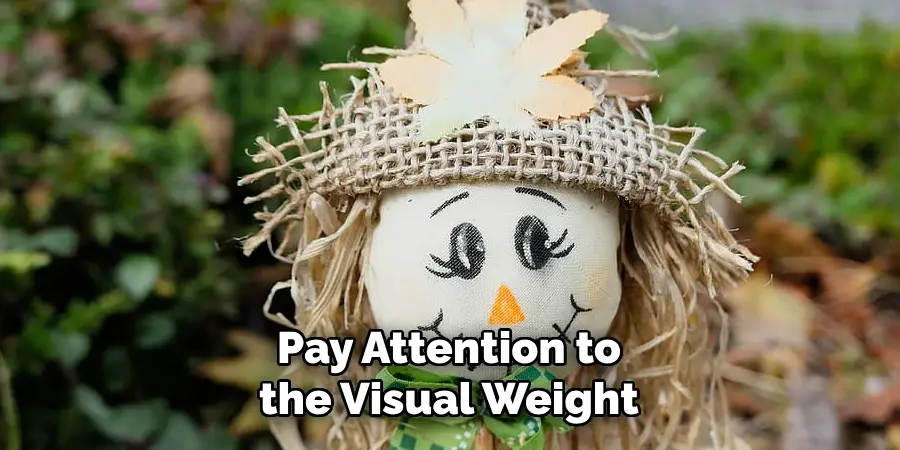
- Choosing Complementary Elements: Make sure the patterns and shapes you choose work well together and complement each other.
- Balancing Visual Weight: Pay attention to the visual weight of each element and ensure they are balanced throughout the design.
- Considering Contrast: Adding contrast between patterns and shapes can create a more interesting and dynamic composition.
Patterns and shapes are essential elements in graphic design that can add depth, interest, and meaning to a design. Experiment with different types of patterns and shapes to find what works best for your design and remember to effectively combine them for a well-balanced and visually appealing composition.
Benefits of Making a Rag Wreath
Aside from being a charming and customizable craft, making a rag wreath also has several benefits:
- Eco-friendly: Instead of throwing away old fabric scraps, you can repurpose them into a beautiful wreath, reducing waste and environmental impact.
- Affordable: Rag wreaths are inexpensive to make, as they require minimal supplies. Plus, using upcycled materials can save money on purchasing new fabrics.
- Creative Outlet: Making a rag wreath allows for creativity and self-expression. You can mix and match fabrics, colors, and patterns to create a unique wreath that reflects your personal style.
- Therapeutic: Crafting has been known to reduce stress and anxiety levels. The repetitive motions of cutting and tying fabric can be calming and help improve focus.
- Handmade Gift: A rag wreath makes for a thoughtful and heartfelt gift. You can customize it to match the recipient’s home decor or use fabrics that hold special meaning to them.
- Seasonal Decor: Rag wreaths are versatile and can be made to fit any season or holiday. You can create a festive wreath for Christmas, a bright and colorful wreath for spring, or a spooky wreath for Halloween.
- Home Decor: A rag wreath adds a touch of charm and personality to any room. It can be hung on a door, wall, or used as a centerpiece for a table.
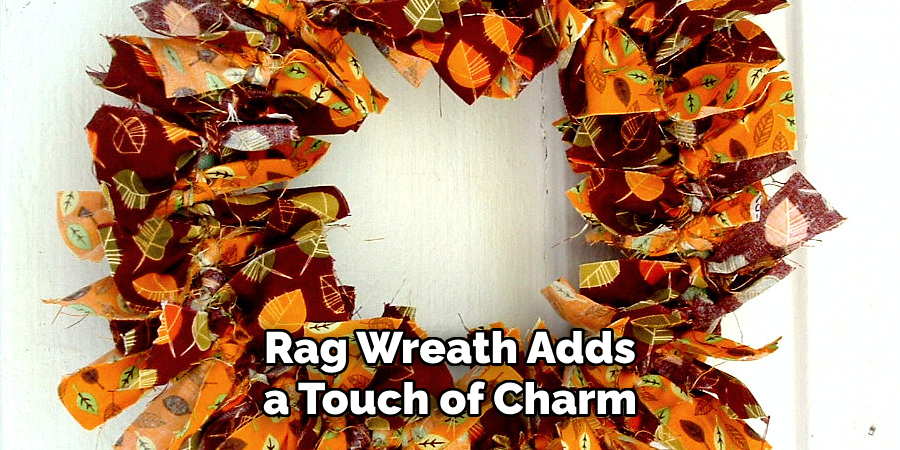
Overall, making a rag wreath is not only a fun and enjoyable activity but also has several benefits that make it worth trying out.
Care and Maintenance Tips for Making a Rag Wreath
- Store in a Dry Place: To keep your rag wreath looking its best, store it in a dry location away from moisture. This will help prevent any potential mold or mildew growth.
- Handle With Care: Rag wreaths can be delicate, so handle them with care when moving or storing them. Avoid crushing or bending the fabric as it can affect the overall appearance of the wreath.
- Spot Clean if Needed: If your rag wreath gets dirty, spot clean it with a damp cloth and mild detergent. Avoid submerging the entire wreath in water as it can cause the fabrics to bleed or shrink.
- Avoid Direct Sunlight: Prolonged exposure to direct sunlight can fade the colors and materials used in your rag wreath. Display it in a location where it is not directly exposed to sunlight to preserve its appearance.
- Rotate Regularly: If your rag wreath is hung in an area with constant exposure to light or heat, consider rotating it regularly to prevent uneven fading.
By following these care and maintenance tips, you can keep your rag wreath looking beautiful for years to come. Plus, with proper care, you can even pass it down as a cherished heirloom to future generations. Overall, making a rag wreath is not only a fun and enjoyable activity but also has several benefits that make it worth trying out.
Conclusion
In conclusion, while making a rag wreath can be a fun and budget-friendly way to decorate your home, it is important to consider the disadvantages associated with this crafting project. Firstly, creating a rag wreath requires time and patience. Cutting and tying strips of fabric can be time-consuming, especially if you are working on a larger wreath.
Moreover, making a rag wreath can also be messy. Cutting and handling fabric strips can leave behind bits of thread and lint, which can be difficult to clean up. It is important to have a designated workspace and proper cleaning tools on hand when embarking on this project. I hope reading this post has helped you learn how to make a rag wreath. Make sure the safety precautions are carried out in the order listed.

